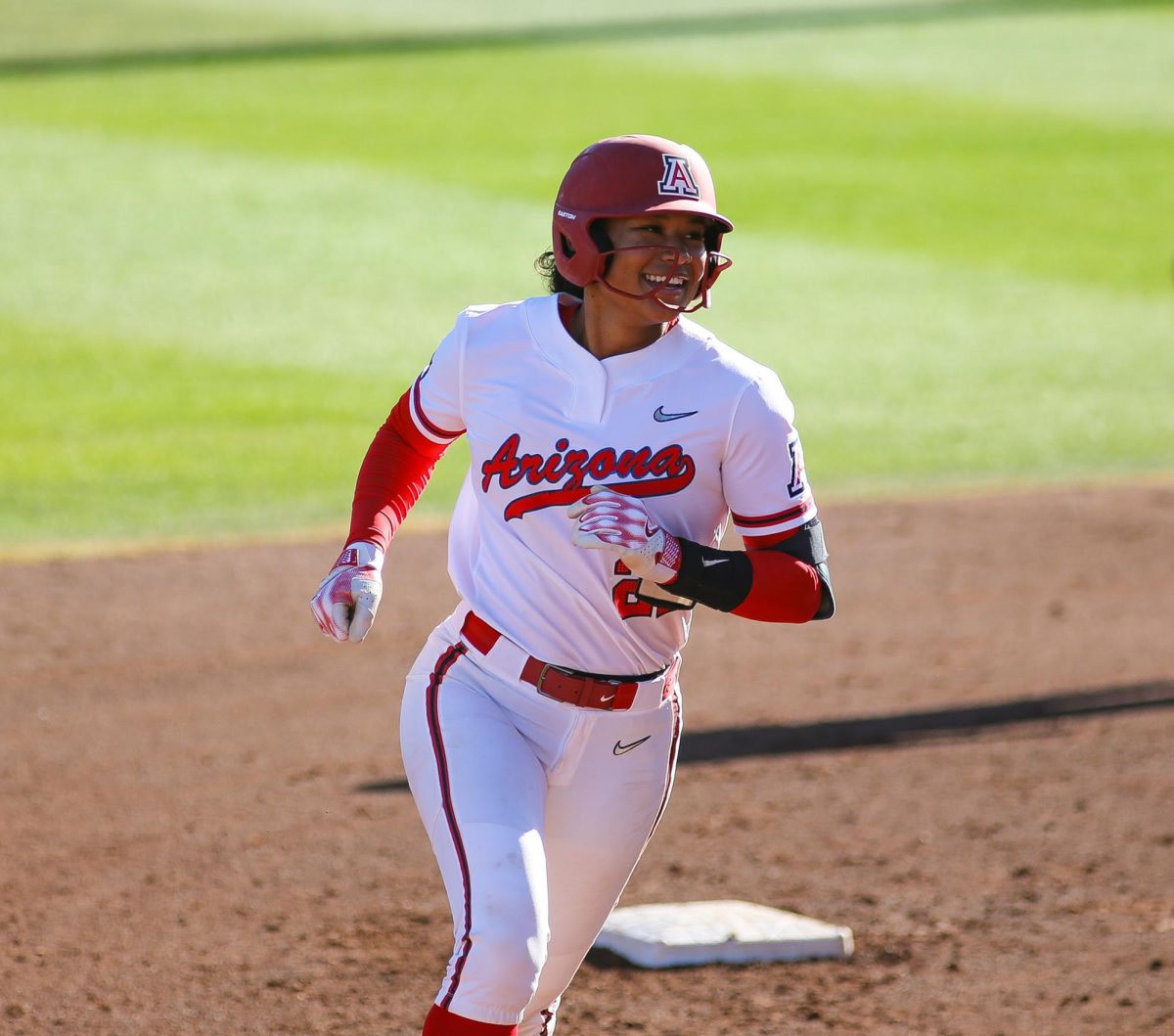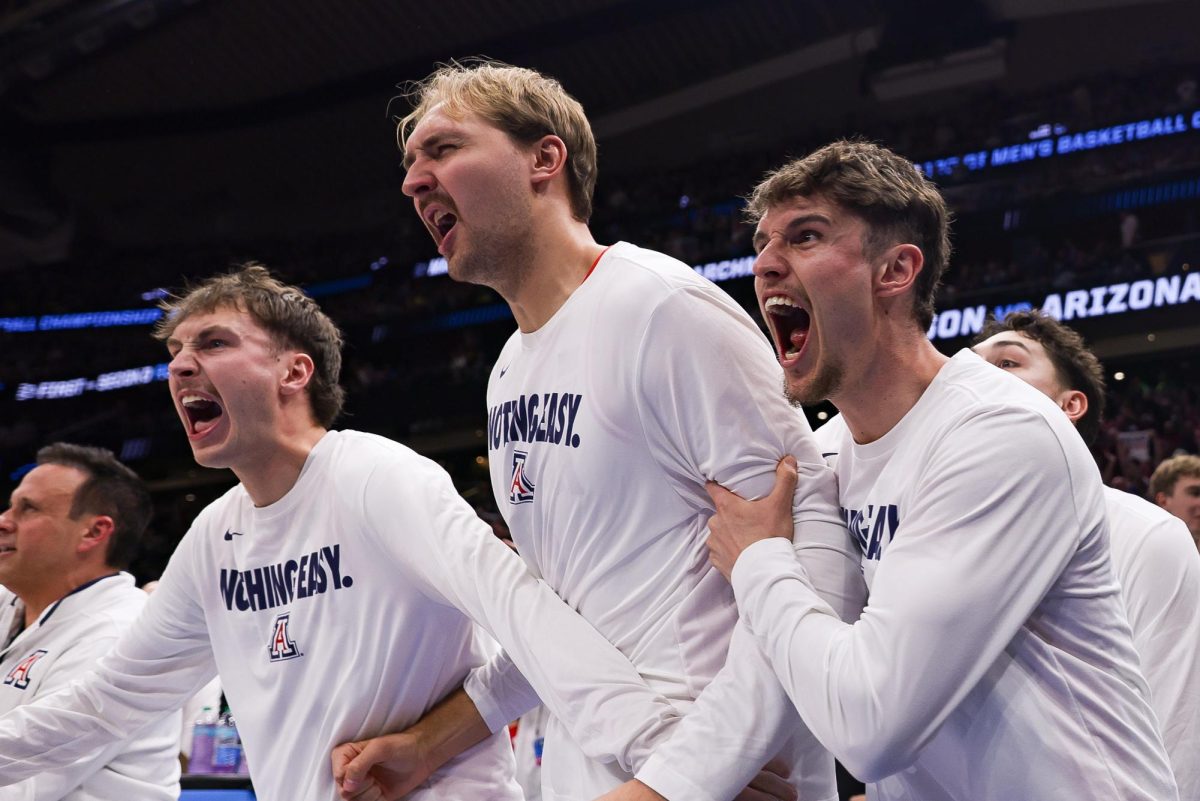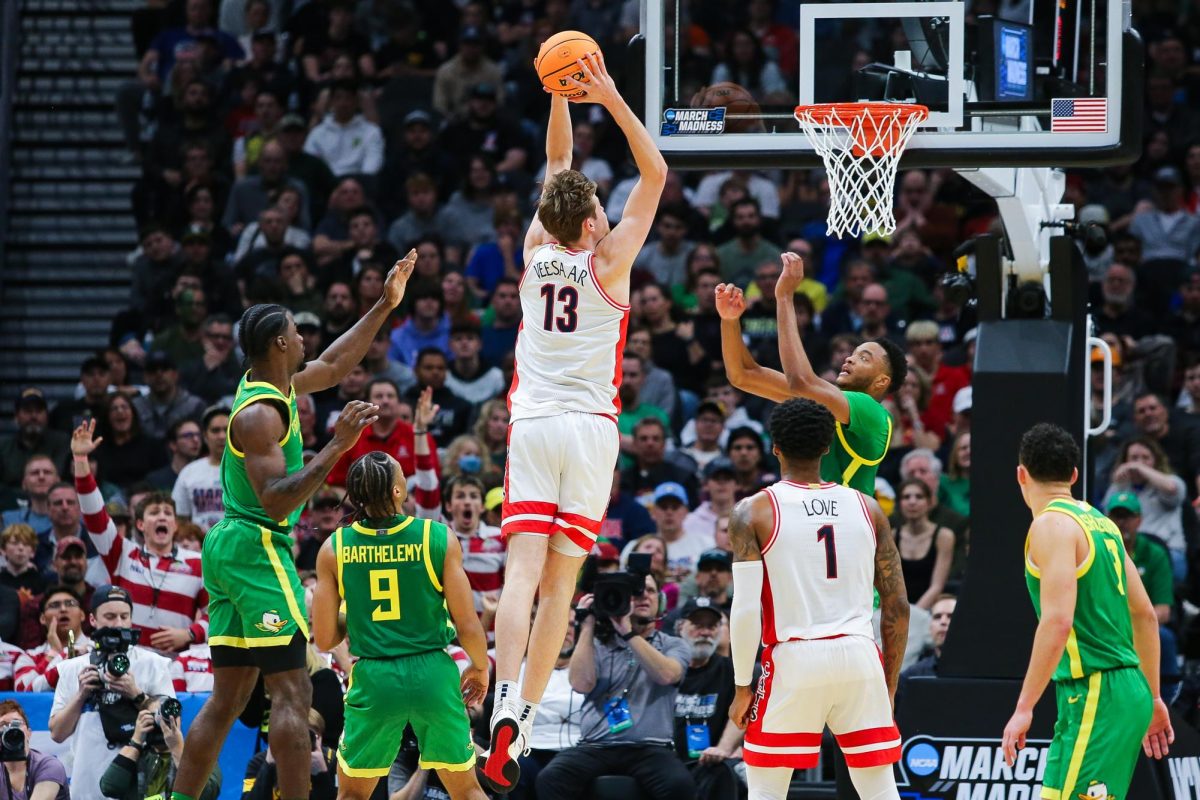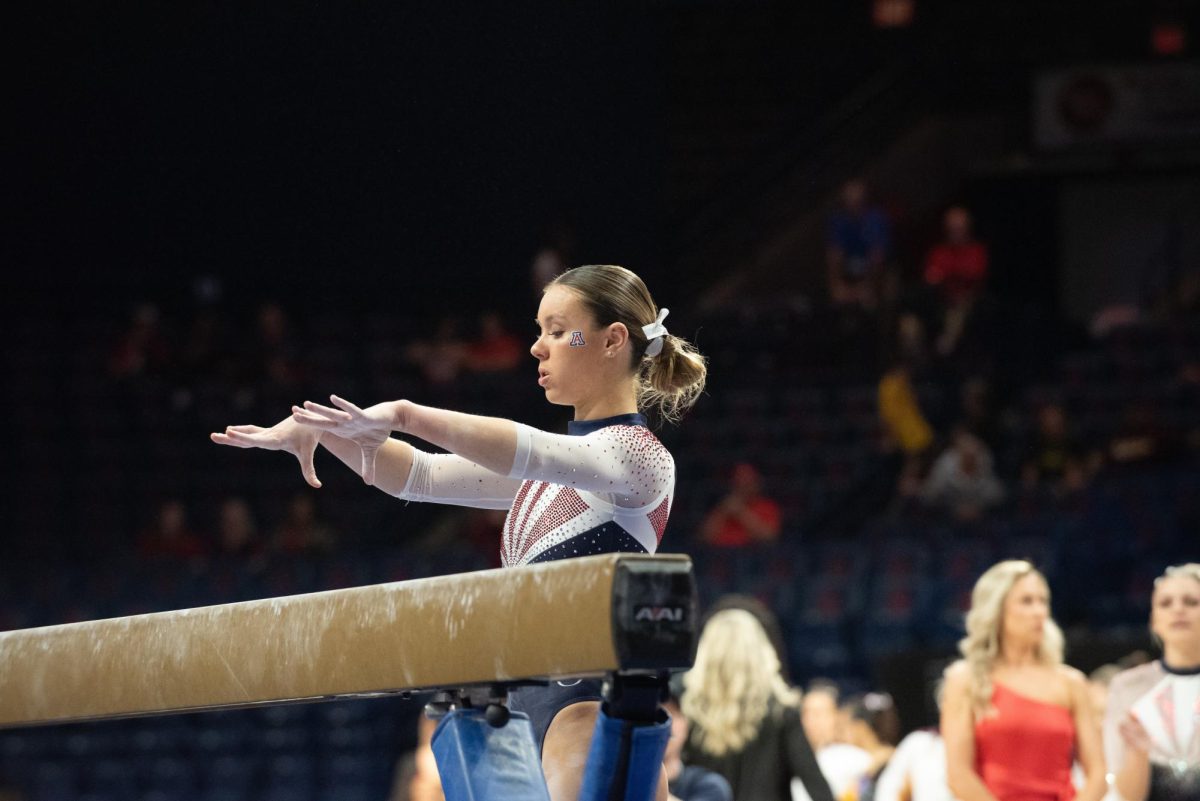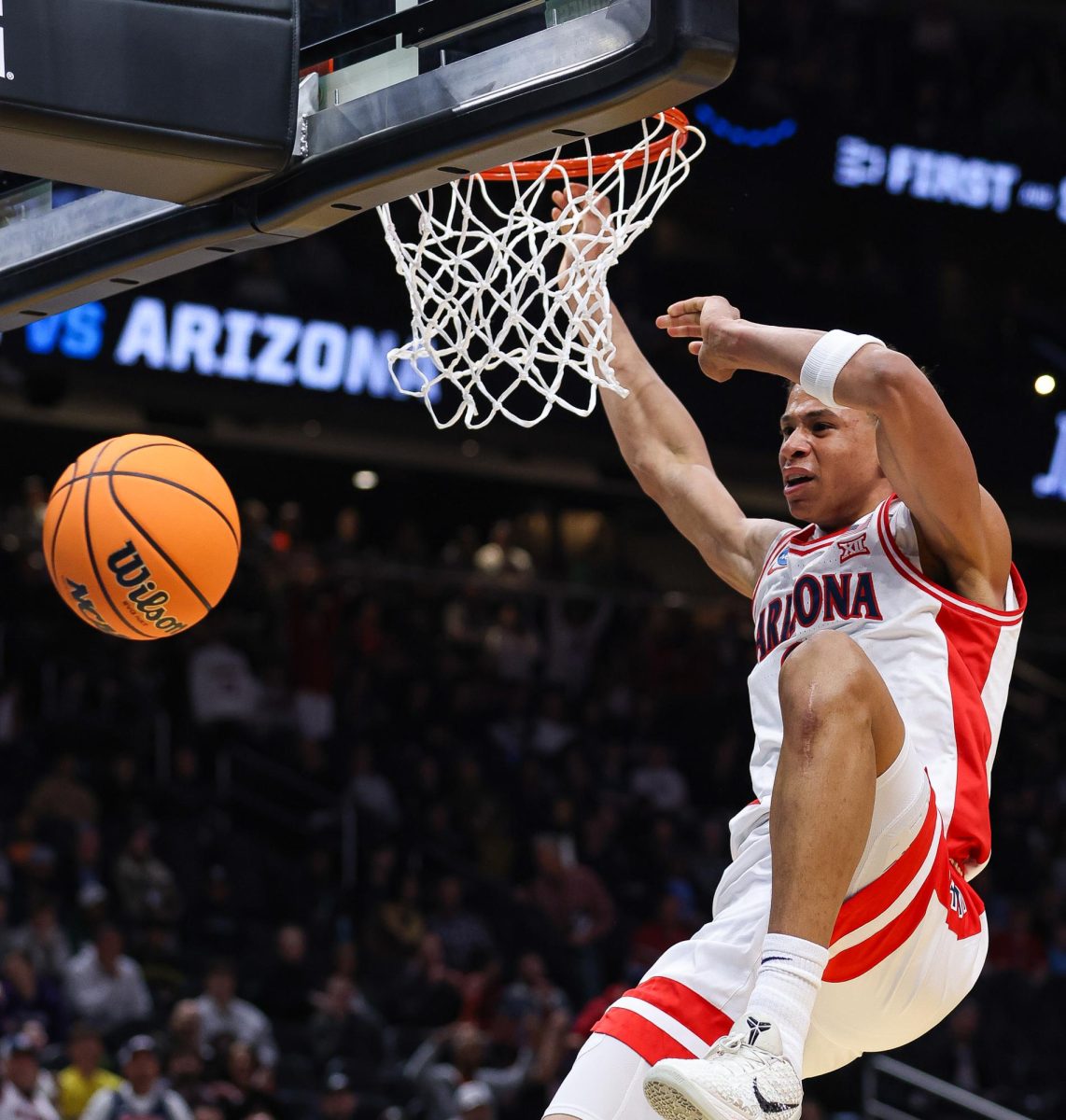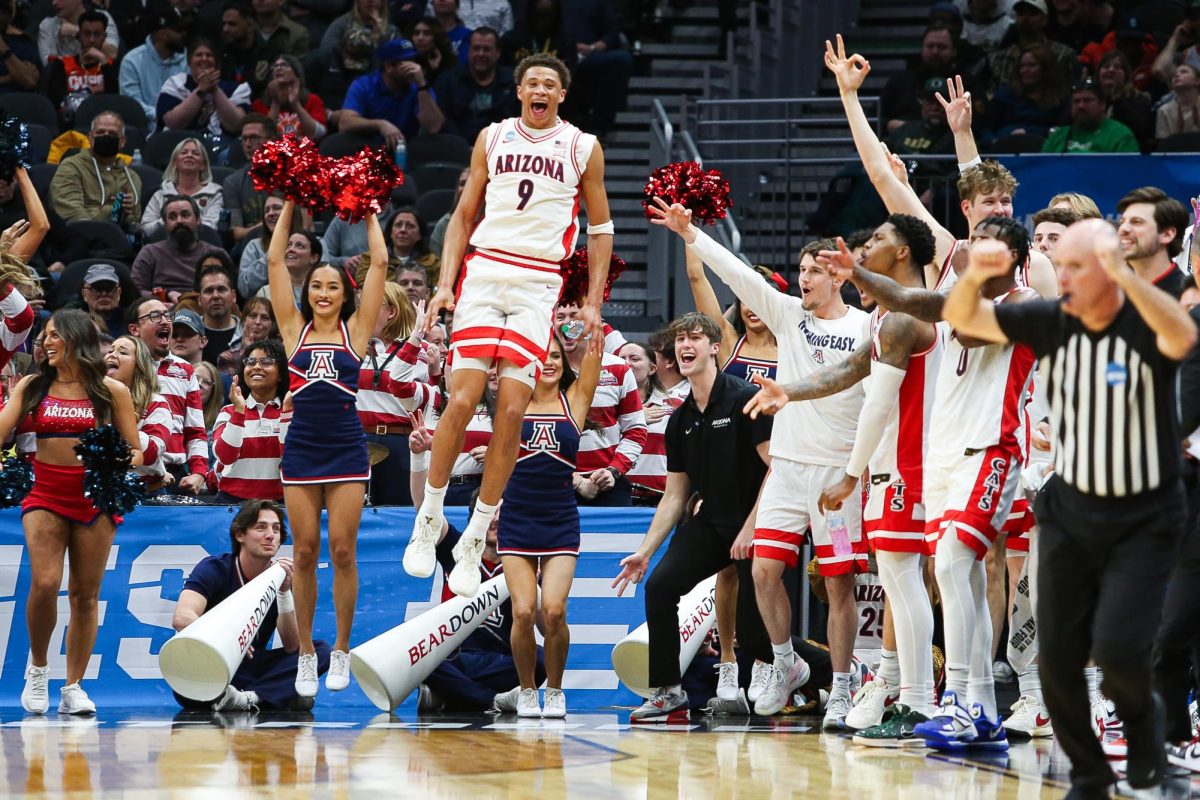Pro: ‘Cats on track for better-than-expected season
Look up “”second-half team”” in the dictionary. The Arizona Wildcats are probably listed as an example. See games against USC — the Wildcats were down 27-10 to the Trojans — and Oregon State as examples of poor starts getting the best of them.
In each case Arizona clawed back, losing to the Trojans by only six points (56-50) and at one point jumping ahead of the Beavers by 11 points before its offense stalled in the final four minutes of the game.
Yes, both the USC and Oregon State games were losses. Neither time, however, did the Wildcats fold. The theme: Resilience.
That second-half mentality can be applied to the second half of the season for Arizona. After a rough non-conference schedule, the Wildcats have turned the corner and will have the opportunity to win every game from here on out.
The Wildcats love the second half, even when they get down in the first. It’s the second half of the season, and Arizona is eying a comeback once again.
An offense that once resembled a pick-up game at the Student Recreation Center now looks much improved. A defense that allowed scoring wing players to go Kobe on Arizona has seen its points allowed to opponents drop through the past four games — it has allowed 76, 70, 64, 60, 58 in the past five contests.
That’s not to say Arizona has peaked, nor does it allude to the Wildcats making The Big Dance. Simply put, Arizona is growing up and finally resembles, at the very least, a team that can beat any Pac-10 team on any given night.
Arizona could have given up against USC, down 17 in a hostile arena. It could have done the same against OSU and against ASU last weekend.
In the big picture, the Wildcats could have called it quits after getting throttled by Brigham Young University on Dec. 28, the team’s last non-conference game in which they allowed Cougar guard Jimmer Fredette to score 49 points.
“”This season means nothing anymore,”” the team could have said.
“”The Streak will be over. Let’s look to next year.””
That didn’t happen, and instead, Arizona’s rollin’.
Con: This weekend defines the Pac-10
Almost.
There’s no doubt Jamelle Horne’s statement, “”We’re not young anymore,”” actually says something.
The Wildcats, flirting with mediocrity since taking Lipscomb to overtime early this season, can establish themselves this weekend against the conference-leading Bay Area schools — a weekend that should, finally, shape the Pacific 10 Conference into tiers.
Last week’s romp against ASU gave them this opportunity, but it didn’t secure anything.
Some compare Kevin Parrom’s takedown to last season’s pivotal turning point when Houston’s Aubrey Coleman stepped on Chase Budinger’s face.
That’s a cop-out.
Arizona played better last season because they played harder — not because of memories from a footprint on Budinger’s face or some magical adrenaline that lasted two weeks. Arizona shed its soft shell and tore into a seven-game winning streak, rearranging the structured Pac-10 ladder.
This year’s team has never been particularly soft, just disorganized and awkwardly young. Sean Miller sometimes substitutes like a hockey coach, going deeper into his bench than any of the previous interims.
It’s getting to the point when this team knows what motivates it on a daily basis.
It’s getting to the point when bodies become depth — and useful depth at that. Guys like Parrom and Momo Jones are beginning to click — not because a first-place spot is up for grabs, but because they’re tested and hard-nosed east coast players.
Horne said this summer he knew these freshmen could play — particularly with an unconscious “”it”” factor most freshmen lack. Now, they’re just starting to blossom through expectations nobody ever set for them.
To see Parrom take down ASU’s Ty Abbott and give a smirk like The Situation after a robbery — that shows the initial spark.
Now it’s about how the Wildcats respond.



